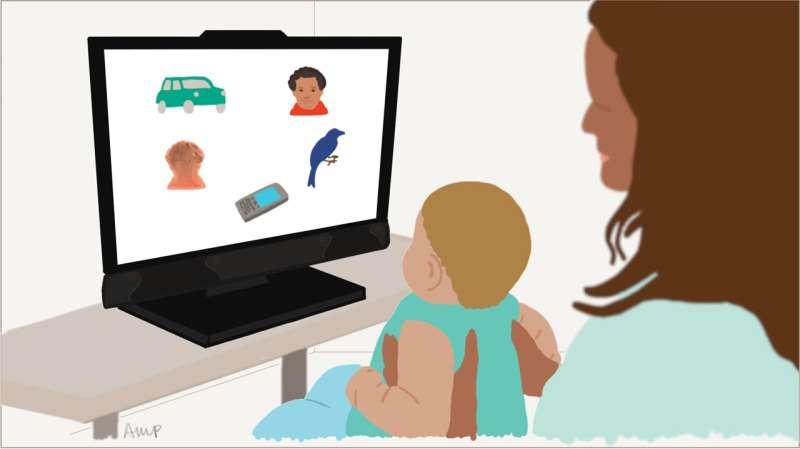This article has been reviewed according to Science X's editorial process and policies. Editors have highlighted the following attributes while ensuring the content's credibility:
fact-checked
peer-reviewed publication
trusted source
proofread
Genes influence whether infants prefer to look at faces or non-social objects, research suggests

Whether infants at 5 months of age look mostly at faces or non-social objects such as cars or mobile phones is largely determined by genes. This has now been demonstrated by researchers at Uppsala University and Karolinska Institutet. The findings suggest that there is a biological basis for how infants create their unique visual experiences and which things they learn most about. The study has been published in the journal Nature Human Behaviour.
The way in which we explore our environment with our eyes affects what we notice, think about and learn. The new study analyzed preference for faces versus non-social objects in more than 500 infant twins.
"Our results suggest that even before infants can influence and choose their environment by pointing, crawling or walking, they create their own unique perceptual experiences by systematically looking more at social or non-social objects, preferences that can be largely explained by genetic differences between children," says Ana Maria Portugal, Postdoctoral Researcher and first author of the study.
The children's gaze was measured using an infant-friendly eye tracker. The results showed that individual infants' preference for faces could be largely explained by their genetics. The family environment did not explain preferences for social versus non-social information this early in life.
The researchers found that more looking at faces versus non-social objects at 5 months of age was associated with having a larger vocabulary in the second year of life. This supports the view that there is a link between early-looking preferences and later development.
Differences in looking behavior can potentially affect the interaction between parent and child.
Whether an infant looks at faces or not is a strong signal to other people and can influence parents' behavior toward their child. However, it should be remembered that looking at a lot of non-social objects is not necessarily negative—it is also important for cognitive development, explains Portugal.
The study is part of the Babytwins Study Sweden (BATSS) research project where identical and fraternal twins have been tested using different child-friendly methods at the Karolinska Institutet Center for Neurodevelopmental Disorders (KIND). The children were followed from 5 months to 3 years of age, but eye tracking was only conducted at 5 months.
Portugal found that the looking preferences of the genetically identical twins were more similar than those of the fraternal twins. For example: if one identical twin in the pair looked mostly at non-social objects, there was a large chance that the other twin had the same preference. In contrast to identical twins, fraternal twins on average share only 50% of their genes. Their looking preferences tended to be less similar within each pair of twins.
In addition to the link to later language development, the researchers examined whether visual preferences could predict whether the infants, later in childhood, exhibited behaviors characteristic of autism, which is defined by difficulties with social communication. They also tested whether there were gender differences in facial preference.
"Our results indicate that face preference in infants is not strongly associated with social communication ability later in childhood. We also found no difference between boys and girls in terms of preference for faces versus non-social objects," notes Terje Falck-Ytter, Professor at the Department of Psychology at Uppsala University and principal investigator in the BATSS study.
"Moreover, our data showed that the genes which influence facial preference are not the same as those involved in eye contact—that is, whether infants looked primarily at the eyes or the mouth when looking at a face. It's fascinating that two basic social behaviors like looking at faces and looking at eyes have different genetic and probably evolutionary bases," adds Professor Falck-Ytter.
More information: Ana Maria Portugal et al, Infants' looking preferences for social versus non-social objects reflect genetic variation, Nature Human Behaviour (2023). DOI: 10.1038/s41562-023-01764-w. www.nature.com/articles/s41562-023-01764-w




















